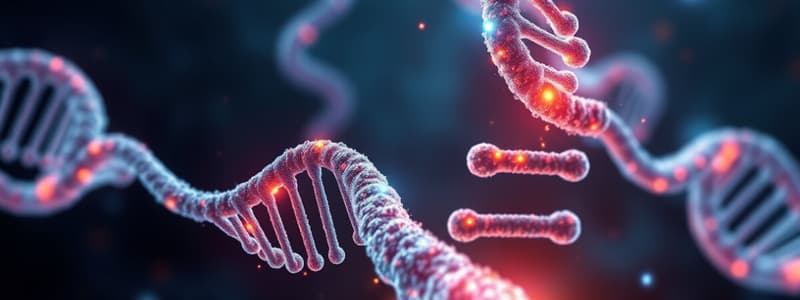Podcast
Questions and Answers
What is chromatin?
What is chromatin?
DNA and protein that makes up chromosomes; clusters of DNA, RNA, and proteins in the nucleus of a cell.
What is a histone?
What is a histone?
DNA tightly coiled around proteins; helps maintain the shape of the chromosome and aid in the tight packing of DNA.
What is replication in the context of DNA?
What is replication in the context of DNA?
Copying process by which a cell duplicates its DNA.
What is DNA polymerase?
What is DNA polymerase?
What happens during DNA replication?
What happens during DNA replication?
Flashcards are hidden until you start studying
Study Notes
Chromatin
- Composed of DNA and proteins, forming the structure of chromosomes.
- Found in clusters within the nucleus, containing DNA, RNA, and proteins.
Histone
- Proteins that DNA coils around, influencing DNA structure.
- Facilitate the DNA's arrangement either in a loose, uncondensed form or in compact x-shaped chromosomes.
- Crucial for maintaining chromosome shape and enabling efficient packing of DNA.
Replication
- Refers to the process through which a cell duplicates its DNA.
- Essential for cell division and ensuring genetic information is transmitted accurately to daughter cells.
DNA Polymerase
- Enzyme that plays a critical role in DNA replication.
- Responsible for linking individual nucleotides to form a complementary DNA strand.
DNA Replication Process
- Initiates with the separation of the DNA molecule into two strands.
- Each original strand serves as a template to create two new complementary strands.
- The process adheres to the base pairing rules, ensuring accurate replication of the genetic material.
Studying That Suits You
Use AI to generate personalized quizzes and flashcards to suit your learning preferences.




